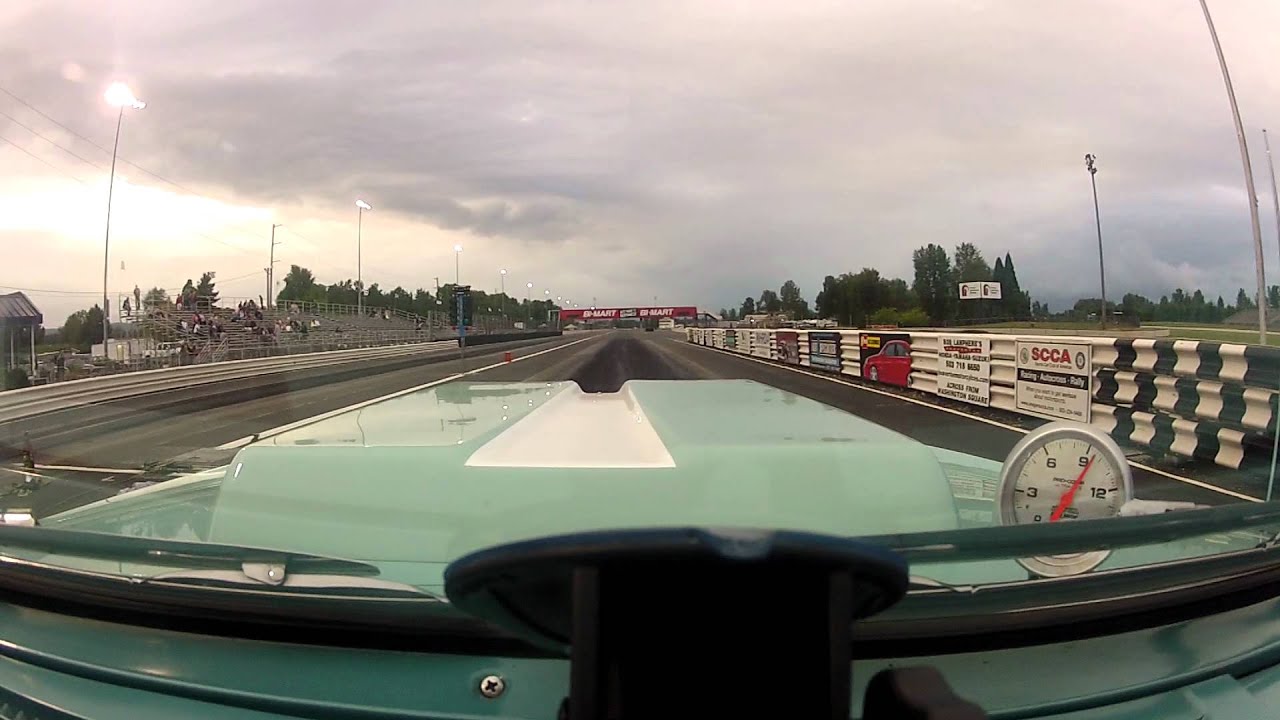
ACC has owned our Hemi-powered 1963 Dodge 440 2-dr Post for six months now. During that time, pretty much everyone on staff could be heard bench racing about it at one time or another, all of us wondering if it was really capable of 10-second runs as advertised. This past Friday night, I took it to the drag strip to find out.
I’ve been involved in drag racing since around 1999, but I’d never been in a car that claimed to be as fast as this one. The literature that came along with the Dodge was clear – 10.80s and 123 mph all day long. And from the looks of things, none of that was hard to believe. The 500-inch Indy Maxx aluminum Hemi felt plenty potent, and the loose converter and 4.10 gears were just the ticket for sub-11-second runs.
So ACC Data Analyst Chad Tyson, ACC Digital Media Director Jeff Stites and I tossed a set of slicks in the back of Chad’s Jeep, along with my jack and some tools and headed for Portland International Raceway for a Friday night drag session. We filled up the Dodge with a tank of 93 Supreme and hit the track around 6:30, just in time to wait out a small rain storm that was moving through the area. Once we dried off the Dodge, installed the slicks, and checked all the fluids, I lined up for my first pass of the night.
I did a burnout to get the tires hot, rolled forward, staged, and left on the third yellow light for a reaction time of .258. The car hopped a few times before biting the ground, running sixty feet at 1.760 seconds. Our quarter mile time was 11.575 seconds at 118.01 miles per hour. At the top end, she was pulling to the left, but the ride was fairly smooth overall – but this was no ten-second run.
We dropped the tire pressure in the slicks and evened out the pressure in the front tires to try to correct the pull. The times consistently improved, but only slightly, and the car continued to wander around its lane on full throttle. Ten pounds of pressure in the slicks netted the best run of the night: a .138 reaction time, ET of 11.423 seconds at 118.23 mph, and a sixty foot time of 1.669 seconds. Not too shabby, but again, not exactly what we expected. What we learned was that the car is solid, reliable, and pretty consistent.
I called the car’s builder and seller for a few tips and got a checklist for our next time out. We’ll be running 103 octane race fuel when we try again, and I’ll be jetting the carb a little differently. Also, someone had reset our shift light down to around 5,500 RPM — it should be set to 6,200. That alone was probably worth a couple of tenths and a few miles per hour.
Will we break into the tens? Absolutely – but drag racing is never as easy as it looks, and we’ve got some work to do to get there!